Stoic Philosophy in Antiquity: Its Origins, Metaphysics and Ethical Principles
Introduction
Consistent across all of the Hellenistic philosophical schools was the importance of the Soul, the distinction of the human soul as having the capability to reason (what came to be known as logos, a very important term in early Christian theological circles), and the special importance and connection of the human Soul with the Cosmic Soul – an idea incidentally that had/has many strong parallels with the Vedic philosophical schools to the East, namely the notion of Atman and Brahman .
These core theo-philosophical concepts and their relationship are typically attributed to Plato, particularly in interpretations of his Timaeus, but the intellectual and fundamentally mystic tradition of man being created in the image of God goes much further back in antiquity than Plato[1] no doubt. Plato surely drew on the mystery/pseudo-religious traditions that were prevalent in his day not only in Greece (Orphic, Dionysian, etc.) but also in Egypt that had a strong mystic, cultish and wisdom tradition closely guarded by their priests that was known to the early Greek philosophers as well. Plato was further influenced, as we all Greeks really, by the mythic and poetic (hymnos) traditions of his day reflected in the works of Homer and Hesiod. This latter influence can be clearly seen in the various mythical references throughout his dialogues, the sum total of which represented the content and knowledge from which Plato and his followers and successors drew.
Origins of Greek Philosophy: Plato and Logos
Clearly one of the most unique and lasting contributions of the Platonic philosophic tradition is the establishment and elucidation of the notion of Reason, and of course the foundations of Reason itself – namely dialectic, logic and mathematics (number theory and geometry) – as the means by which the fundamental truths of these ancient mystic traditions could be known or brought to light. Here we have the foundations of modern western scientific reason laid out for us, even if it was some two thousand years later that the Scientific Revolution cemented these views in stone. He also was the first to establish the connection between cosmology, physics and ethics to a degree that had not be done before, a characteristic that became one of the core tenets of Hellenistic philosophy as it spread throughout the ancient Western world in antiquity. He further established the semantics, in Greek, through which these topics could be discussed and explored, a linguistic and intellectual development whose importance cannot be overstated. For before Plato the language of philosophy was shrouded in myth, analogy and metaphor, and after Plato the Greek philosophic schools and practitioners that followed him now had – even if they disagreed with him on various issues – a semantic and philological framework through which these esoteric ideas and concepts could be further explored and elucidated upon.
Platonic ideas and concepts surrounding the Soul and the role of Reason, put forth primarily in the Phaedo, Republic and Timaeus is presumed to have been strongly influenced by his teacher Socrates, and then was interpreted through his successors in the Academy, Aristotle being the most notable of these of course. Upon this philosophic foundation Hellenic philosophy in all its forms, along with arguably all Western theological traditions to date, rests. Although there emerged disagreement and debate on various philosophic tenets that he put forth in the Academy itself as well as between the Platonic school and alternative philosophic disciplines (Stoicism and Epicureanism for example which diverged from Plato’s doctrines in many respects) the basic tenets and language put forth by Plato regarding the human Soul, the role of the intellect or Reason, and the existence of the One along with the World Soul remained consistent themes throughout all the later philosophic and theological doctrines that followed him.
Aristotle, Substance and Causality
Aristotle criticized many Platonic themes and premises, and Aristotle most definitely takes pains to point out the places not only where his tenets and beliefs differ from Plato, but also where he felt that Plato’s teachings were inconsistent or incoherent and in need of not only significant further clarification but also in some cases in need of substantial revision. In particular Aristotle was not comfortable with the coherence and completeness of Plato’s cosmological and epistemological framework, mostly outlined in the Timaeus, which was predicated on Plato’s notions of “Being” and “Becoming” and the ontological supremacy of the realm of Ideas over the realm of the sensory and material world – the Craftsman working off of an intellectual model which was essentially his metaphor for universal creation (see plato.stanford.edu/entries/plato-timaeus/ for details).
Aristotle put forth what he felt was a much more comprehensive and coherent metaphysics based upon his notion of hylomorphism and causality, essential concepts throughout his teachings but certainly most prevalent in the his Physics and Metaphysics. [Despite these core metaphysical differences between these two early great minds, interestingly later Platonists, most notably with Plotinus, Porphyry, and Proclus some six or seven centuries later, found the teachings of Aristotle and Plato much more aligned and consistent than Aristotle himself did, or the followers of his Peripatetic school which he founded.]
Matter versus Form
The period of philosophical development just after Plato and Aristotle, as the influence of the Greek culture somewhat waned and the period of Roman (and Latin) culture began to take root in the Mediterranean and Near East, two alternative philosophic schools rose in prominence that challenged some of the fundamental tenets of Plato’s system, in particular challenging the skeptic bent that was characteristic of the Platonic school and the Academy after Plato’s passing referred to most commonly in the academic literature as Academic Skepticism. For Plato’s Ideas and their relationship to his ethics, and to a lesser extent his physics, naturally led his followers to suggest – as Socrates is believed to have done more directly and for which perhaps more than any other reason was brought to trial for ”impiety” and “corrupting the minds of youth” and eventually killed – that there were significant intellectual limits upon that which could be known, given that according to Plato true knowledge and understanding (epistêmai) rested on the existence of, and fundamental reality of, pre-existent and abstract Ideas (Forms) from which any understanding of the physical world depends upon.
According to Plato’s model, this realm of Ideas exists within the logos, or Intellect (Nous), of the One and connects the individual human Soul, via his intellect, with the World Soul metaphysically. This is the essence of Plato’s metaphysics and the source of major philosophic debate in Hellenistic philosophy after Plato – an epistemological debate about the source of knowledge, either through abstract Ideas as espoused by Plato and his followers (as well as early Judeo-Christian theologians) versus the ontological superiority of of the world of sense perception – i.e. the substance (ousia) of Aristotle which was reflected in the in the Stoic and Epicurean traditions which became fairly widespread in Greek and then Roman antiquity.
Both the Stoic and Epicurean traditions were heavily influenced by both the teachings of the Academy as well as the Peripatetic school founded by Aristotle (and in the case of Stoicism by the Pythagorean tradition as well) and rose to prominence in no small measure by directly challenging some of the basic epistemological assumptions of the Platonic school taught at the Academy. These schools took an altogether opposing stance on the primary intellectual building blocks of nature, and in turn man, positing the supremacy of the material world over the intellectual world. The Stoic and Epicurean philosophic schools were very popular and influential throughout the ancient world in the last few centuries BCE of Hellenic influence right up until the period of Christian influence in the Mediterranean region some six centuries later, after which all of these Greek philosophical schools were branded pagan, their followers ostracized, and their active, practicing traditions waned considerably, Neo-Platonism perhaps being the one exception which flourished independent of Christianity at least until the 5th century CE.
Epicurus and the Sources of Stoic Doctrine
Epicurus (341-270 BCE) was the founder of the Epicurean school and he based his teachings, at least from a cosmological and physics perspective, on the atomic doctrine that was espoused by Democritus some hundred or so years earlier. But the Epicurean system was popular for its ethical, way of life, based tenets more so than its physics, teaching that although the world of the gods existed and was true, these gods were too busy in their own world to be bothered with human affairs and therefore supplication to them was of no consequence. He further espoused the belief, consistent with his atomicist physical doctrines and contrary to Plato and more consistent with Aristotle, that the Soul was not in fact a material substance and therefore perished upon death of the body, constructing a system of beliefs that was based upon the optimization of pain and pleasure to achieve peace and tranquility in this life and effectively removing the concern about judgment and the afterlife from the equation as it were. Epicureanism was influential through Roman times as evidenced by its significant treatment and faithful transmission of doctrines through the philosopher/historian Diogenes Laertius (3rd century CE) who devotes a full chapter on Epicureanism, from which much of our knowledge of the original teachings and metaphysical underpinnings are conserved in fact.
The Stoic tradition more so than Epicureanism was perhaps the most influential doctrine outside of Platonism in Hellenistic Greece and throughout the Roman Empire, providing for an alternative, and more intellectually palatable approach to metaphysics and ethics perhaps, being juxtaposed with the seemingly complex and ethereal, and perhaps even mystical, nature of Platonism. Stoicism in particular had a fairly advanced view of the Soul and the Mind, one which although was more materialistic than Plato from a certain perspective, was nonetheless theological in nature in citing the existence of one true and omnipresent God (theos, Plato’s Demiurge) through which the universe itself not only came into existence but through whom the existence of the universe was looked after and kept in balance.
Stoicism was founded by Zeno of Citium (335-263 BCE) in the third century BCE and although differing from Platonism in many respects and on some important key points, as it evolved and matured was nonetheless very much influenced by not only Platonism but also the Peripatetic school (Aristotle) as well. Zeno, having been born on the island of Samos off the coast of modern day Turkey, is believed to have spent his most prolific studying and teaching years in Athens, where at the time the Academy was flourishing and the legacy and teachings of Pythagoras were still fresh in the minds of the Greeks. The Stoic lectures and teachings were said to have been held in public in Athens, specifically in the Agora under a “painted porch” (stoa poikilê), hence the name of the school. The fact that the lectures were open to all and not kept secret or only taught to the initiated is believed to be one of the key factors as to why Stoicism resonated so well with the Greek populace at large.
Zeno was succeeded by his pupil Cleanthes (331-232 BCE), who was in turn succeeded by perhaps the most notable and prolific Stoic philosopher in antiquity Chrysippus (c. 280-207 BCE) through which the Stoic doctrine matured and became more formalized having had several generations of adaptation and revision and having evolved subject to attacks and criticisms of the Skeptic tradition that was predominant at the Academy during this time. These three teachers are sometimes referred to as the ‘Old Stoa’ and although their works survive only in fragments and pieces, the Stoic doctrine along with specific and relevant Stoic quotations from the Old Stoa do survive through the likes of
- Cicero (106-43 BCE), the Roman/Latin statesman and philosopher who although primarily a politician did author some philosophic works that were exemplary in their own right (notably On Ends and Academics which surveyed the predominant philosophies of his era from various perspectives of which Stoicism of course was well represented),
- Plutarch the Middle Platonist (c. 45-120 CE) who was highly critical of Stoicism but wrote several works covering its doctrine nonetheless, the Roman/Latin Stoic philosopher, statesman and dramatist Seneca (4 BCE-65 CE),
- the Roman philosopher Epictetus (c. 55-135 CE) whose teachings were captured by his student Arrian in his work Discourses of which some fragments survive,
- the Roman Emperor Marcus Aurelius (121-180 CE) whose diary entitled Meditations provides interesting information about the life of a practicing Stoic, and
- through the writings of Diogenes Laertius the 3rd century CE author of Lives and Opinions of Eminent Philosophers who although (seemingly) of Epicurean bent was sympathetic to Stoic doctrine and covered its philosophy and history in some detail.
It is through these writings, much of which is in Latin as well as Greek, that the Stoic doctrine survives down to us, and modern interpreters of the tradition must not only wade through the transliteration and translation of terms from not only Greek and Latin, but also try and piece together some of the more esoteric cosmological and physical elements of the doctrine which are much less well documented as they were not the main focus of some of the later Stoic philosophers whose work we have in toto. As the later Stoic tradition as reflected in the works that we have were more concerned with the ethical portions of the doctrine, those which espoused right reasoning and its relationship to virtue and happiness in life, rather than the physical, logical or cosmological portions of the doctrine on which the ethical foundations were laid by the Old Stoa.
Stoic Metaphysics and Cosmology
During this period of six or seven centuries where Stoicism flourishes in the West before being eclipsed by Christianity, there is a somewhat symbiotic evolution that takes place between Platonic thought and doctrine and Stoicism proper, arising from the well documented philosophical disputes between the Skeptic tradition as reflected by the Academy on the one hand, and the materialist Stoics (and to a lesser extent the Epicureans) on the other. The Stoics held that not only can fundamental truth and knowledge be ascertained via the senses and proper functioning of the rational mind, in direct contrast to the Academic Skeptics, but that in fact perfection in wisdom could be achieved when this rational faculty of man (ἡγεμονικόν, or hêgemonikon) was completely aligned with Reason, or Nature (Logos). Their adage “living according to the laws of Nature” summed up this belief to a great extent.
With respect to the immortality of the Soul, although the Stoics did not consider the Soul to be immortal as Plato espoused given his doctrine of eternal and ever present Ideas of which the Good was the ultimate level of abstraction and of which the Soul was an elemental part, they did ascribe to the persistence of the Soul somewhat beyond the death of the body, particularly associated with perfect Stoic sages. However, they did not have as materialistic a conception of the Soul as the Epicurean school did, the latter having adopted Democritus’s atoms as the primary building blocks of the universe of which to them the Soul was no exception, albeit consisting of finer matter than basic material objects. These ideas that the competing philosophical schools had with respect to the nature of the Soul fundamentally shaped their ethical doctrines as well as the tools which they described to achieve happiness, which was the end (telos) of all the philosophic traditions in antiquity. To the ancients of course, philosophy was a practical art which intended to lay out the rational foundations of how to live, upon which the bedrock of a happy life sat, hence the predominant role of Ethics in the Hellenic philosophical traditions.
In many respects borrowing from Platonism, Stoic cosmology speaks of two primary principles (archai) which are eternal and exist throughout the universe, the first being the Creator who is identified with intelligence or reason (logos) and is an active principle, and the second inert, inactive, and acted upon principle which is acted upon by the Creator which corresponds roughly to what we today call matter – again Aristotle’s substance (ousia). God in this context (and keep in mind that these ancient philosophic schools did not think of God in the monotheistic sense, this is all pre-Christianity) is identified with an intelligent force, or fire (a doctrine associated with Heraclitus although not directly attributable to him necessarily) which structures the physical world of matter according to its plan, beginning at the creation of the cosmos first with the generation of the primary elements – fire, air, water, and earth respectively; the first two principles being active in nature and the latter two of which are passive and acted upon and then followed by the subsequent creation and preservation of the known universe which consists of corporeal elements, and then finally the inevitable destruction or devolution of the universe back into the primary fire from which it initially emerged. This is cosmological universal order espoused by the Stoic tradition more or less, the universe being an endless cycle of creation, preservation and destruction – eerily similar to the Vedantic tradition to the East in fact.
Although the Stoics diverge from their Platonic and Peripatetic predecessors on many points, particularly with respect to physics, ethics and psychology (again literally the “study of the soul”), from a cosmological perspective they share many similarities, and with the Stoic tradition in particular Pythagorean influences can be seen as well. To the Stoics as well as to the Platonists, the material universe originates from a single, living divine force, what came to be known as God in the Christian tradition and was known as Yahweh in the Jewish tradition. Out of the Platonic One which the Stoics equated with God, is established the basic building blocks of the universe, again archai. For in both traditions, as was true in nearly all of the cosmological traditions in antiquity in fact, it is via the movement or combination/mixture of an active (male) force which comes from the One (for everything must derive from the One) upon the inactive or passive (female) force which is associated with matter, which is the Same of Plato or in the Stoic tradition is described as the “unqualified substance”, from which the four elements earth, air, water and fire are created and in turn from which the entire physical universe emerges. This active force is seen as the application of order, or reason – the hand of God if you will – upon the unqualified material from which the universe is made – Plato’s Good and the Stoic Logos[2].
In the more mature Stoic psychological doctrine as put forth by Chrysippus, the two active elements (fire and air) combine to form the basic constituents of universal matter which consisted of and were governed by various types of pneuma, meaning “breath” or “spirit” or “soul” depending upon the context. Pneuma to the later Stoic tradition was a key concept to their physics and represented the basic building block of their corporeal world which was not only active in principle, i.e. subject to being acted upon or acting in and of itself and subject to change, but fundamentally intelligent at all levels of the cosmos from start to finish. The God of the Stoics was present in all of creation, not just the manifestation of the hand of the divine craftsman as was typically interpreted to be the case in the Platonic tradition.
Where these cosmological traditions diverge is the combination and primacy of the four elements and in the underlying mechanics at work within the World Soul and the human Soul, from which the two significantly different metaphysical and psychological systems derive – the Platonic tradition resting on the epistemological significance of the realm of Ideas and the power of the Intellect to discern fundamentally Good characteristics such as virtue and justice from which happiness derived, whereas the Stoic tradition believed the physical world of the senses, combined with proper functioning of the rational faculty of man (hêgemonikon) that was the source of virtue and in turn happiness.
Stoic Ethics: The Harmonious Intellect
Another distinguishing characteristic of Stoic psychology is the role of what they refer to as sugkatathesis, a word typically translated into English as “assent” but within the context of Stoicism implies an approval or agreement of a collection of facts, or what they refer to as “presentations” or phantasiai. These presentations make impressions upon the commanding faculty of the mind, hêgemonikon. The analogy that was used by early Stoa to describe this relationship was imprint (tupôsis), like the way a signet ring imprints its shape into soft wax. Alternatively, some later Stoic philosophers described impressions as an “affection” (pathos) of the Soul, or as “alterations” (alloiôsis or heteroiôsis) of the commanding faculty (hêgemonikon) of the Soul. Regardless of the metaphor used, the implication is that to the Stoics the sensory perceptive experience, what today we might refer to as cognition, was not necessarily simply an intellectually or mental grasping of the simple qualities and attributes of the objects of perception, but a collective experience of cognition between the subject and object of experience which impacted and affected the Soul in some way.[3]
The senses, which included the reproductive faculty, were subservient to this “commanding faculty” and their proper management or temperance was the goal of the Stoic philosopher. In their psychological scheme, the mind receives sensory information and processes the information accordingly, but unlike the alternative psychologies offered by Plato and Aristotle which broke the Soul out into rational and irrational parts, the Soul of the Stoic was entirely governed by reason and therefore pure wisdom, infallible judgment, was not only possible but was in fact the goal, or end, of the Stoic philosopher. True wisdom for the Stoics was in harnessing and utilizing this commanding faculty which was unique to mankind to “assent” only to rational impulses, thereby living according to Nature, or God, which again was a purely rational entity from their point of view. By purifying the mind and attaining wisdom, one’s “commanding faculty” could be honed to perfection and no false judgment or “assent” (sugkatathesis)[4] could be possible, hence the ideal of the perfect Stoic sage.
To the Stoic then, although the universe was governed by Reason and to a certain extent was predetermined given God’s pervasiveness throughout the universe (God is referred to sometimes in this tradition as Fate), an individual did have Free Will to the extent that they had control over their commanding faculty, which again fully assimilated and absorbed the senses (these were not fundamentally irrational impulses), to which proper rational adjudication of assent to truth and reality was the key to virtuous and happy living which, consistent with all of the Greek philosophical traditions, was the goal of life and the purpose in fact of philosophy itself. The Stoics taught to live according to the laws of Nature, laws which were based upon Reason and Logic and if adhered to and understood properly could lead to perfect wisdom which facilitated and was synonymous with a virtuous, and in turn happy, life. In the Stoic tradition, logos then was viewed as the rational and active principle of God that permeated the universe and gave it life and characterized both the world Soul and the individual human soul, and again when harmonized and understood properly, and with proper attunement of the instrument of logos, was the secret to divine happiness and the core of their ethics.
This Stoic principle of assent then, as adjudicated and applied by the commanding faculty of the Soul, hêgemonikon, along with the complementary system of logic (which incidentally was closely associated with language and propositional logic which enabled for the establishment of truth versus falsehood) allowed the Stoics to develop a system of ethics that had a sound rational and metaphysical foundation that rested, in contrast to the Platonic tradition, on the presumption of the fundamental reality of the “corporeal”, or physical world which in turn mirrored the corporeal universe, each element of which was governed by the same principle of reason or logos and which was also characterized by “pneuma”, the divine spirit, which permeated and was subsistent throughout the universe and was governed by logos, reason. For in the Stoic tradition, the notion of “corporeality” extended not only to the physical world, but also to the abstract world such as the Soul and even to abstract concepts and ideals such as Virtue, Justice and Wisdom.
Stoic Physics: Divine Corporealism
The Stoic pneuma was the “sustaining cause” (synektikon aition in Greek or causa continens in Latin) of all material entities, animate creatures included, and was characterized by both an inward as well as outward motion which was the source of both the external qualities of a “thing” or “body” (again inanimate as well as animate) as well as that which provided for unity of existence to that object or entity. In the concept of pneuma to the Stoics also rested their hierarchy of substance, akin to the hierarchy of Souls laid out by Aristotle but with some notable differences which again had a strong influence on Stoic ethics.
Pneuma existed in various forms; in inanimate objects where it was characterized primarily as that which gave the object unity or held it together (hexis or “holding”), in the plant kingdom where pneuma was characterized by a more active principle referred to as “nature” (phusis or physis in Greek), in animals where it is characterized by a more complex structure where it was associated with Soul (psychê)[5], and then finally in rational animals, i.e. man, where pneuma is given the (divine) attribute of Reason, what they referred to as the “commanding faculty” or hêgemonikon in Greek which was the guiding principle of their ethical system.[6]
Within the Stoic tradition pneuma was the essence and binding force of the material universe, somewhat akin to Aristotle’s substantial form and certainly very similar to the intelligent force that permeates the universe espoused by the Middle Platonists. This pneuma exists throughout the universe in a continuum existing in inanimate matter, the plant and animal kingdom, and culminated at the top of the universal hierarchy in the man which had the distinguishing, and fundamentally divine, capability of Reason (logos), a distinguishing characteristic which as it turns out the Stoics associated very closely with language and propositional logic.
Only human beings and gods possess the highest level of pneumatic activity, reason [logos]. Reason was defined as a collection of conceptions and preconceptions; it is especially characterized by the use of language. In fact, the difference between how animals think and how humans think seems to be that human thinking is linguistic — not that we must vocalize thoughts (for parrots can articulate human sounds), but that human thinking seems to follow a syntactical and propositional structure in the manner of language. The Stoics considered thinking in rational animals as a form of internal speech.[7]
In this sense Stoic physics which was based upon the supremacy and reality of the physical world as perceived by our senses and the role of the active principle of intelligence that permeated through the eternal universe (logos), not only deviated from the supremacy of Platonic Ideas (Being) over Becoming, or that which was subject to change, but also from Aristotle’s doctrines of being and essence which although more broad than Plato still distinguished between the material world, which to him depended upon intelligibles as well as particulars as reflected in his doctrine of hylomorphism, and the world of Soul which included both form and matter alike and from which all virtues and vices emanated.
The Origins of Stoic Metaphysics: Conclusion
Having pointed out where the Stoic physical doctrine diverges from its predecessors, it’s fair to say that it still rested on their philosophical shoulders to a large degree, as Stoic physics and cosmology most certainly have antecedents in both the Platonic as well as Peripatetic schools. For example in Plato’s description of the primary cosmic principles of Being and Becoming, the latter is defined by “that which has the power to act or be acted upon”[8], a definition which is adopted by the (later) Stoic tradition and once extended to Stoic corporealism (pneuma) provides for the metaphysical grounding and synthesis of not only the physical world as governed by the senses but also the world of the Soul which is although governed by Reason is still corporeal and divine in nature.
In Aristotle’s doctrine of Substantial Form, the Stoics also find an antecedent for the metaphysical bridge from which (Plato’s and then Aristotle’s physics which is defined by change or motion) metaphysical constructs such as the Soul and even virtues themselves could be considered to be “corporeal” in this sense as they could in fact be acted upon or changed, well beyond Aristotle’s original conception of course, and inconsistent with his view of the Soul as presented in De Anime, but nonetheless standing on the shoulders of his metaphysics to at least some degree.[9]
So Plato’s doctrine of Being and Becoming which rested on the supremacy of Ideas over what we would call today physical reality which Aristotle criticized and led to his formulation of the theory of causation which bridged the gap between Forms and Substance to a large extent, were both precursors to, and were influential on, Stoic physics and in turn psychology. But the unique contribution of Stoicism to antiquity is perhaps their unique interpretation and transformation of the traditions and teachings of their philosophical predecessors, the result of which leads to some very unique and distinctive characteristics of Stoic philosophy which influence not only the evolution of Hellenic philosophy through the period of Roman influence, but also the formulation of early Christian (and Jewish) theology.
In conclusion, it appears that the origin and development of Stoic cosmobiology was no simple process. The fundamental idea that the cosmos is a living, sentient, intelligent animal was firmly enunciated by Zeno and perpetuated by his successors. This idea, rooted deeply in the mind of the ancient world, Greek and non-Greek alike, was first stated by Zeno in Platonic terms, after Theophrastus had shown that Aristotle’s attempt to eliminate the world soul had left it as firmly implanted in the cosmos as Plato had believed it to be. Cleanthes continued to support Zeno’s doctrine and to buttress it with new arguments. In so doing, he expanded the concept of the world soul to embrace Aristotle’s three psychic functions; and he identified the world soul with the heat of the cosmos, an identification that Zeno must also have made, but to which Aristotle’s physiology now seemed to give further support. Chrysippus, noticing that medical theory had left his school behind, updated Stoic cosmobiology by identifying the world soul with the pneuma (air-fire mixture) that permeates the cosmos. To this pneuma he assigned the three psychic functions that Cleanthes had taken from Aristotle, but he broke up the nutritive function into growth and a new function called hexis or cohesion {συνεχεία). This last function he used, probably following the precedent of Cleanthes, to explain the cosmological problem of the survival of the cosmos in the void. The ultimate result was that the Stoic cosmos had a biological as well as physical side. Though each side owed its existence to the ideas of others, the total integration of the physical and the biological sides of the cosmos resulted in a totally new cosmology, one that can only be characterized as purely Stoic.[10]
[1] As seen quite clearly in the Jewish tradition as reflected in the Old Testament for example.
[2] Note the similar themes in Genesis 1:1-1:2; “In the beginning God created the heaven and the earth. And the earth was without form, and void; and darkness was upon the face of the deep. And the Spirit of God moved upon the face of the waters.” setting the stage for the connection between the Stoic Logos and Plato’s Good to Philo of Alexandria’s Logos and the Word (again Logos) of God in the Gospel of John (John 1:1).
[3] See the Internet Encyclopedia entry on Stoic Philosophy of Mind for a more detailed account of Stoic psychology from which some of this material is drawn. http://www.iep.utm.edu/stoicmind/
[4] The Greek word sugkatathesis denotes a “putting together” or “joint deposit” hence the derived meaning of “assent” or “approval” in this philosophical context.
[5] Note the deviation from Aristotle here where animals are associated with Soul.
[6] Note the parallels here to the “commanding faculty” of the Stoics and the Vedic philosophical notion of “buddhi”, or “intellect” is that which discriminates and processes thoughts or actions, distinguished from “manas” which is the cognitive faculty of the mind or that which merely thinks. The parallels to Stoic psychology are striking.
[7] Internet Encyclopedia of Philosophy, entry on Stoic Philosophy of Mind by Scott Rubarth. http://www.iep.utm.edu/stoicmind/
[8] Plato, Sophist, 247D. From Wikipedia entry on Stoic physics, http://en.wikipedia.org/wiki/Stoic_physics#cite_note-2.
[9] The parallel to the notion of Stoic corporealism could be seen in Aristotle’s notion of substance, or ousia (οὐσία in Greek) which has come down to us in English as “substance” or “essence” given the common practice in Roman/Latin times to translate the Greek term into the Latin “essentia” or “substantia”, neither word properly covering the semantic relevance or underlying metaphysical meaning of the term in Aristotle’s Physics but the best translation we have in English regardless.
[10] David E. Hahm, The Origins of Stoic Cosmology, Ohio State University Press, 1977. Pgs. 173-174

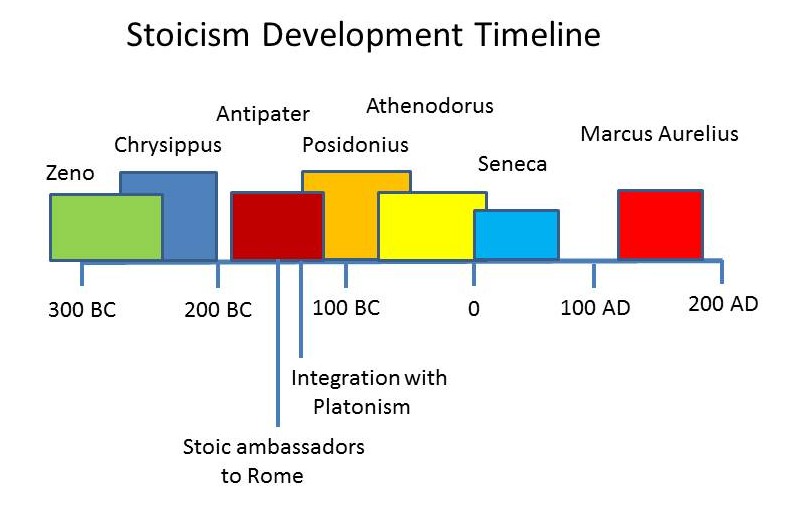
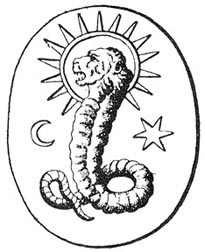



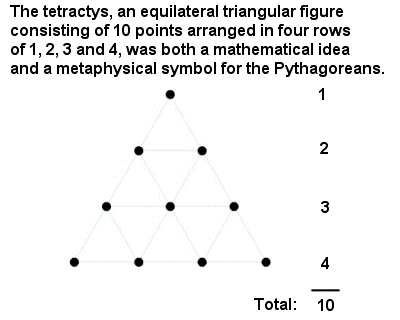
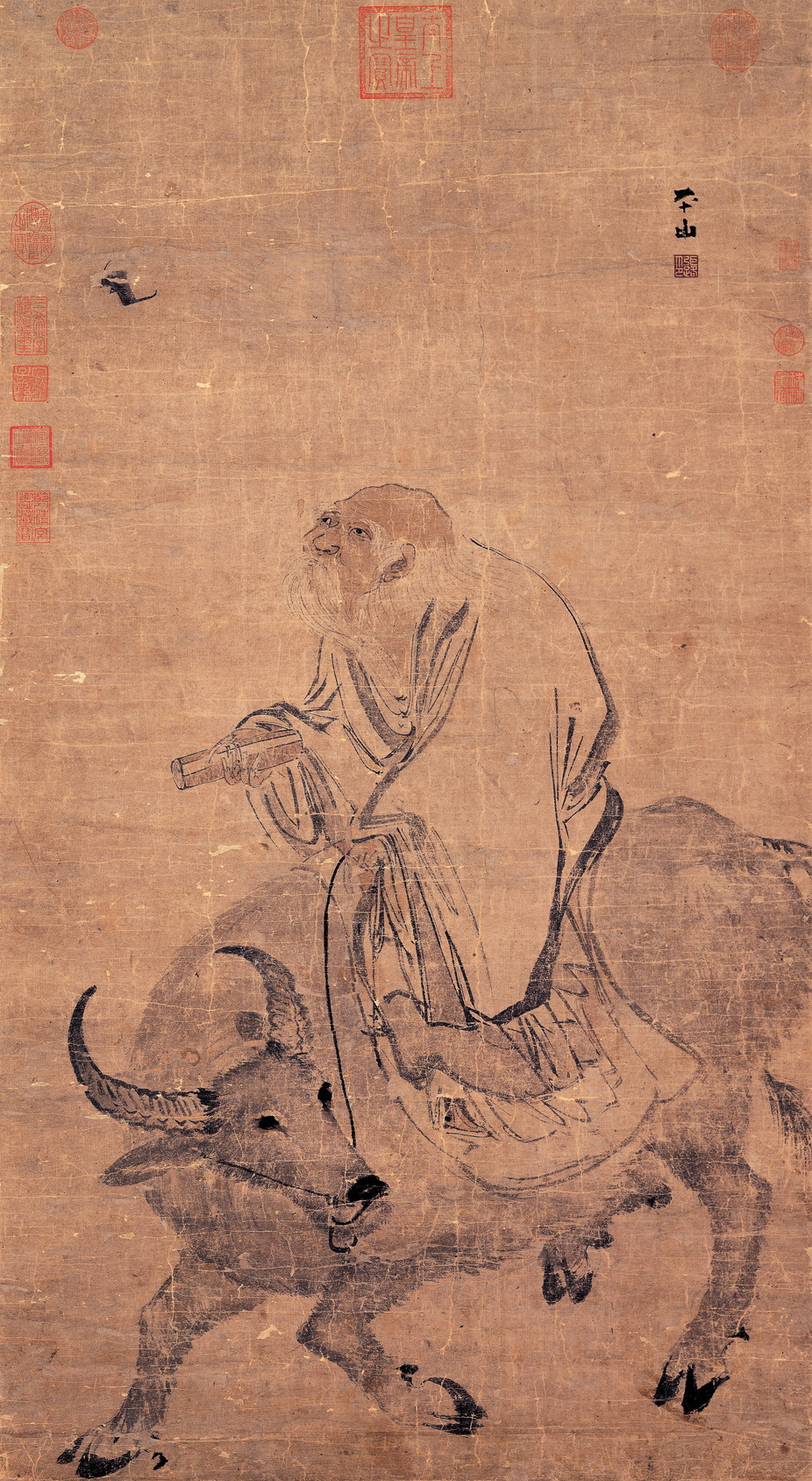

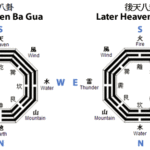
Leave a Reply
Want to join the discussion?Feel free to contribute!